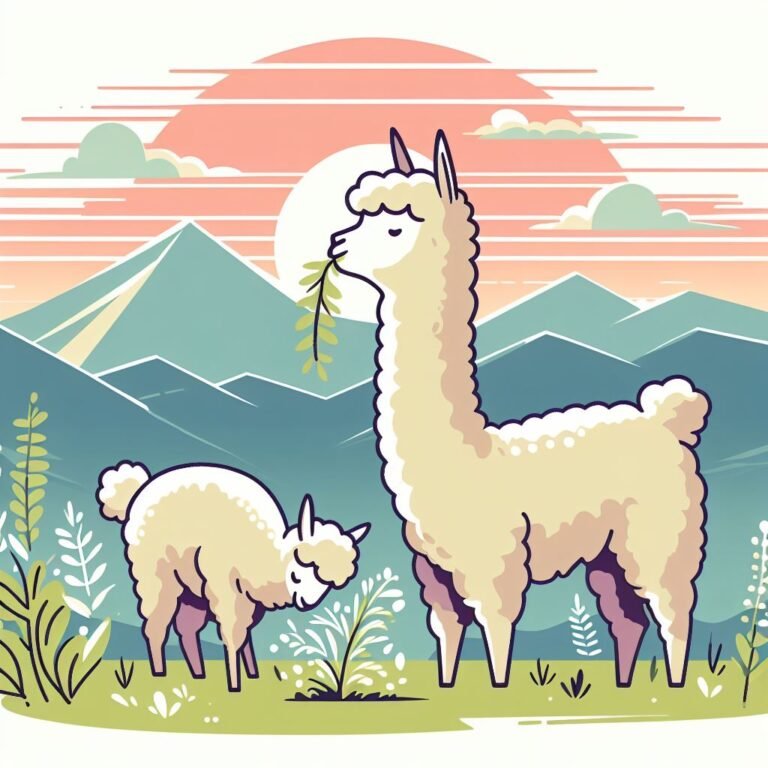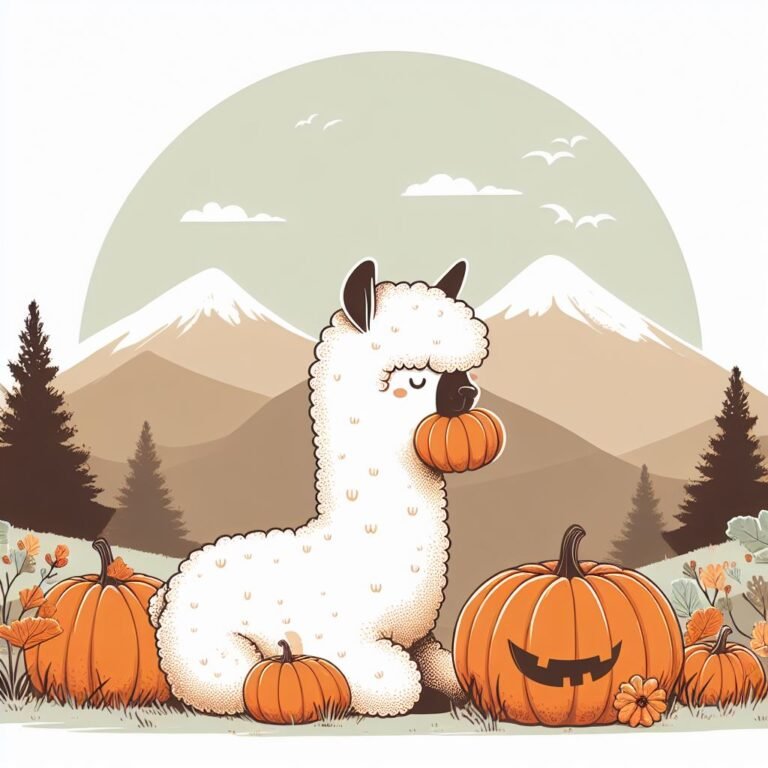Exploring Alpaca Diets: Do They Eat Trees and Shrubs?
Ever wondered what’s on the menu for an alpaca? If you’re thinking trees and shrubs, you’re on the right track. As an alpaca owner or enthusiast, it’s crucial to understand their dietary habits and preferences.
Alpacas’ Diet: Exploring Trees and Shrubs
When I first stepped into the realm of alpaca care, I was curious, fascinated, and overwhelmed – all at once. A burning question that almost every alpaca owner has on their mind is, “Do alpacas eat trees and shrubs?” I investigated – and it’s time to reveal the truth.
- Alpacas do eat trees and shrubs as they are browsers, not grazers, with a significant part of their diet being bushy foliage.
- Alpacas’ diets usually include leaves from willow, poplar, and birch trees and shrubs like rose bushes and raspberry canes. These plants provide essential nutrients to them.
- While alpacas enjoy a variety of trees and shrubs, some can be harmful to them. Species such as yew trees, rhododendrons, and certain types of acorns may cause serious illness or even death.
- In addition to trees and shrubs, alpacas’ diets should also include hay, grains, as well as vitamin and mineral supplements. Overfeeding should be avoided to prevent obesity-related problems.
- Alpacas have a refined sense of taste that allows them to identify what’s nutritious and damaging, helping them maintain a balanced diet.
- Observing the eating habits of alpacas can give useful insights into their nutrition and health, as it may signify a deficiency they’re trying to compensate for.
Alpacas do eat trees and shrubs. Contrary to popular belief, these gentle beasts are browsers not grazers. A significant part of their diet includes eating bushy foliage.
Understanding an Alpaca’s Diet
To lay the foundation, alpacas belong to the Camelidae family, just like llamas and camels. They hail from South America’s harsh Andean highlands where food sources are sparse. To survive, alpacas adapted to a diet predominantly consisting of lowland grasses, shrubs, and trees.
What Kinds of Trees and Shrubs do Alpacas Eat?
Different kinds of trees and shrubs in an alpaca’s diet provide valuable nutrients. It’s common to see these animals nibbling on trees like willow, poplar, and birch. They’re also fond of shrubs such as rose bushes and raspberry canes.
Beyond Trees and Shrubs
While it’s already established that alpacas enjoy trees and shrubs, these creatures are rather versatile with their dietary choices. They can also thrive on hay, grains, and vitamins/mineral supplements. Remember, overfeeding can lead to obesity-related problems. Alpacas should follow a balanced diet.
Are there Trees and Shrubs to Avoid?
Yes. Though alpacas are fond of specific trees and shrubs, certain types can harm them. Yew trees, rhododendrons, and certain types of acorns can cause distress, illness, or even death. It’s essential to understand which trees and shrubs are safe, making this knowledge a key pillar of responsible alpaca care.
In the universe of alpaca care, diet plays a pivotal role. While we journey ahead in exploring alpaca care, let’s remember to relish the bond we share with these fascinating animals. Let’s treat them with love while providing optimal nutrition they deserve.
Understanding Alpacas’ Natural Foraging Behaviors
As browser animals, alpacas interact with the environment in a distinct way. Browsing and foraging are every bit as natural to alpacas as grazing is to cows. I’ve observed that they love to explore their surroundings, nibbling at various plants, trees, and shrubs.
One of the fascinating aspects of alpacas is their discriminating palate. They’re excellent at identifying what’s nutritious and what’s potentially harmful. This keen sense of taste allows them to consume plants, trees, and shrubs in small amounts and different mixes, helping them maintain a balanced diet.
If you’ve ever watched an alpaca browse, you’ve probably noticed they use their split upper lip and neat, compact bottom teeth to effectively strip leaves from branches. This reduces the potential damage to trees and shrubs, preserving the vegetation.
It’s not overstating to say that diet plays a vital role in alpaca care. Taking one step further, I’d like to emphasize the importance of variety in an alpaca’s diet. By consuming a mix of leaves from different trees and shrubs, alpacas gain a broad spectrum of nutrients.
There’s a notable list of trees and shrubs alpacas find particularly succulent, such as:
- Willow
- Poplar
- Birch
- Rose bushes
- Raspberry canes
However, I caution anyone who is responsible for alpacas to do their homework. While the alpacas are discerning eaters, certain trees and shrubs are harmful to them. As part of this article, familiarize yourself with safe and harmful vegetation to ensure your alpacas are always munching on safe foods.
Now that we’ve got the basics down on the natural foraging behaviors of alpacas, let’s take a closer look at specific trees, shrubs, and how they contribute to the overall nutrition of these magnificently fluffy creatures.
The Benefits of Providing Trees and Shrubs in Alpacas’ Diet
If you’re raising alpacas, it’s essential to understand the significant role that trees and shrubs play in your alpaca’s diet. They aren’t just luxury items, they’re a fundamental part of a balanced diet and their health.
:max_bytes(150000):strip_icc()/evergreen-shrubs-curb-appeal-boxwood-getty-0623-f596b4da98b7435396f4e845d593fd91.jpg)
Nutritional Value
There’s more nutritional value packaged in trees and shrubs than you might think. These natural resources provide a variety of essential nutrients. For instance, willow and poplar are rich in protein, fiber, and minerals. Similarly, rose bushes and raspberry canes contain a slew of necessary vitamins apart from their delectable taste that alpacas find irresistible.
Dietary Variety
More than just pastures, providing an array of trees and shrubs adds variety to your alpaca’s diet. This variety not only satisfies their discriminating palate but also ensures that they get a broad nutritional spectrum. Hence, the occasional nibble of birch leaves or rose bushes adds a dash of excitement to their meals, preventing boredom that could lead to unwanted behavior.
Natural Foraging Behavior
Emphasizing natural behaviors is another advantage of incorporating trees and shrubs in their diet. Alpacas are natural browsers. Their split upper lip, compact bottom teeth effectively strip leaves from branches, ensuring minimal vegetation damage.
Here’s a simple table to illustrate the nutritional value of certain trees and shrubs preferred by alpacas:
| Trees/Shrubs | Nutrients |
|---|---|
| Willow | High in protein, fiber, minerals |
| Poplar | High in protein, fiber, minerals |
| Birch | Rich in fiber |
| Rose bushes | Abundant in vitamins |
| Raspberry canes | Abundant in vitamins |
The next segment will entail a deep dive into the contribution of individual trees, shrubs to the alpaca’s daily nutritional intake, and how it keeps these fascinating creatures healthy and content.
Types of Trees and Shrubs That Alpacas Prefer
Understanding what alpacas eat naturally helps us shape their diet that aligns with their innate preferences. They aren’t just grazers; alpacas derive immense nutritional benefits from browsing trees and shrubs.
As we delve deeper into the variety of trees and shrubs in an alpaca’s diet, we come across species like willow and poplar trees. Alpacas have a particular fondness for these due to their soft leaves. Willow and poplar trees also provide significant amounts of protein and fiber, two key components for alpacas’ health.

Other than willow and poplar, alpacas also enjoy species like the mulberry. They love nibbling on the tender shoots and leaves of this plant. Evidence shows that mulberries contribute to enhancing fiber digestibility and improving feed efficiency, making them a crucial part of an alpaca’s diet.
Let’s not overlook shrubs. Hawthorn, serviceberry, and elderberry shrubs rank high on an alpaca’s menu. These shrubs contain numerous vitamins and minerals, vital for alpacas’ wellbeing.
Different trees and shrubs contribute differently to the diet. Below is a quick comparison:
| Tree/Shrub | Key Nutritional Contribution |
|---|---|
| Willow | High Protein, High Fiber |
| Poplar | High Protein, High Fiber |
| Mulberry | Enhances Fiber Digestibility, Improves Feed Efficiency |
| Hawthorn | Rich in Vitamins and Minerals |
| Serviceberry | Rich in Vitamins and Minerals |
| Elderberry | Rich in Vitamins and Minerals |
Incorporating a variety of trees and shrubs into an alpaca’s diet not only provides nutritional benefits but also keeps them engaged, taps into their natural browsing behavior, and ultimately supports their overall health and wellbeing.
Potential Risks and Precautions with Trees and Shrubs
While there’s a plethora of nutritional benefits to diversifying your alpaca’s diet with an assortment of trees and shrubs, there are potential risks and precautions that one needs to be aware of. It’s not about being overly cautious; it’s about providing the best care for these amazing creatures.
We smirk at our alpacas’ amazing ability to sample and savor a wide variety of trees and shrubs, but some species can be toxic to alpacas. Botanical families like oleander, yew, and rhododendron harbor toxic elements that can trigger adverse effects, including digestive upset, respiratory distress, and, in severe cases, death. Don’t be misled by their hardy nature and adventurous palate; alpacas have delicate digestive systems that can be drastically affected by toxicity.

The risk of overconsumption is another area you need to remain conscious of. While trees and shrubs provide important nutritional benefits, they should not become the primary component of an alpaca’s diet. Alpacas typically graze on grasses, and this should make up the majority of their feed. Overconsumption of trees and shrubs could hinder their balanced diet, leading to nutritional deficiencies or obesity.
When it comes to feeding, try to simulate their natural browsing behavior. Allow your alpacas to choose from a variety of trees and shrubs, while ensuring the removal of any toxic species from their vicinity. An informed approach can keep the balance tipped in favor of nutritional benefits over potential risks.
Lastly, it’s essential to monitor their eating habits. If an alpaca is overly enthusiastic about a particular tree or shrub, it could signify a deficiency in their diet that they’re trying to compensate for. Your diligent observation can keep their diet variety in check, while ensuring that they get all the nutrients they need.
While incorporating trees and shrubs into an alpaca’s diet, a responsible caregiver would do well to remember these three guiding principles:
- Identify and remove toxic species
- Manage the balance of dietary components
- Monitor eating habits and adjust as needed








One Comment
Our picks
Alpaca & Wool Felted Sole Inserts: Comfy Upgrade?
Best Alpaca Socks for Hiking: Ultimate Comfort and Durability on Trails
Best Alpaca Halter for Comfort and Control